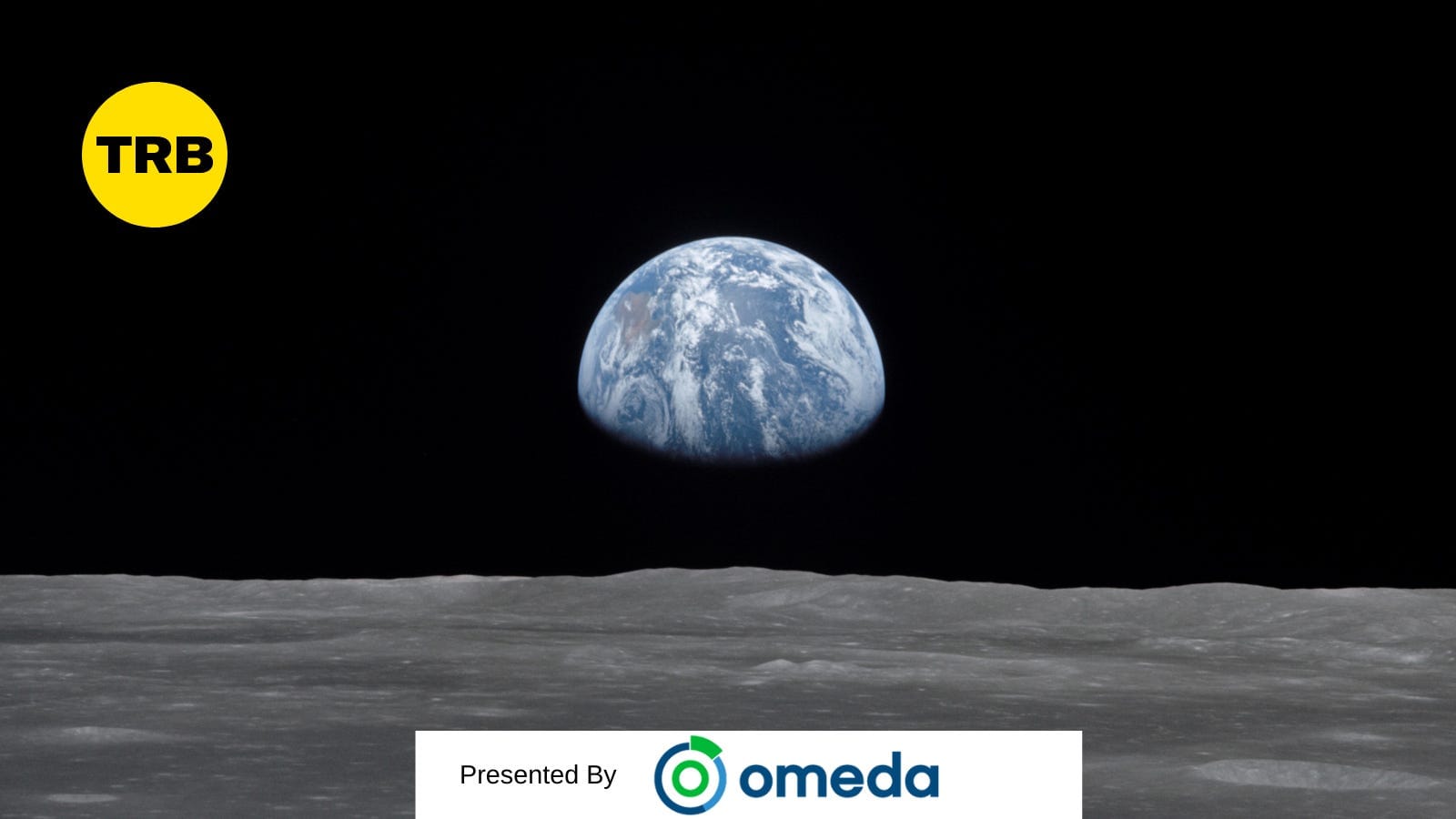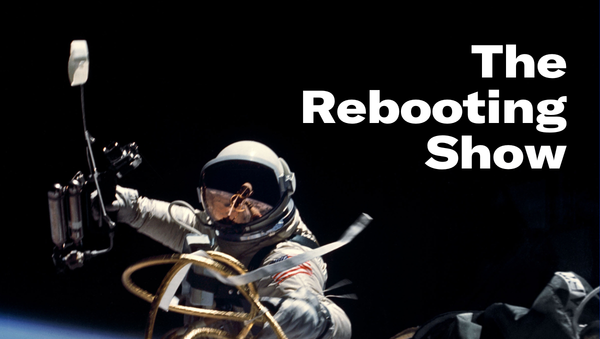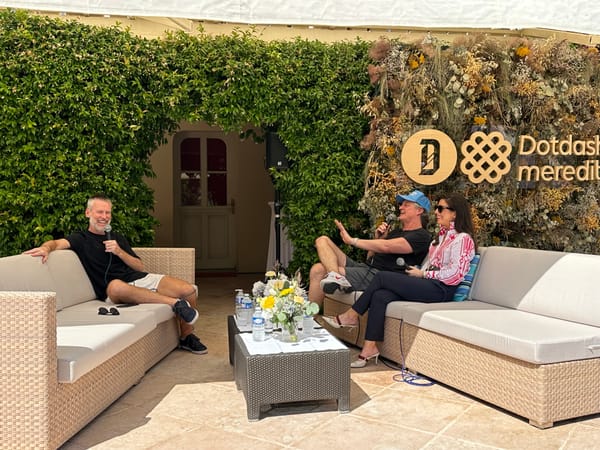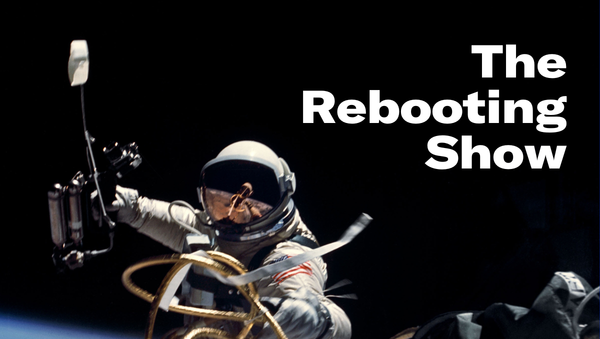The Roaring 20s of digital publishing
We're entering a long-overdue cycle of media innovation

If the past two years have taught us anything, it’s to be wary of optimism. Time and again, taking the hopeful view has proven a bad bet, from the belief we could “flatten the curve” to the faith in vaccines ending the pandemic. By the same token, the same is true of digital publishing, which has consistently extinguished flickers of hope.
That’s why I’m unsurprised that the news of an ambitious global news startup – yes, aimed at English-speaking college educated people – was met with skepticism. Few doubted the capabilities of the founding team: Justin Smith, formerly global CEO of Bloomberg Media, has proven himself one of the most adept operators of digital media businesses. Ben Smith, formerly New York Times media columnist and founding editor-in-chief of BuzzFeed News, has proven to both have a nose for news and the ability to build a formidable news operation. Then the nitpicks started: Two white middle-aged white guys with the same last name, a vague description of what exactly this unnamed entity is, and the idea that 200 million college-educated English speakers are an underserved audience.
This is missing the forest for the trees. Instead, I’d focus more on what this says about the state of digital publishing now, coming off the unmitigated disaster of the past decade. History doesn’t repeat itself, but it often rhymes. The last burst of enthusiasm for digital publishing occurred during the mid-2000s to early 10s. Back then, blogs like TechCrunch, Mashable and GigaOm grew into new brands, venture capitalists placed big bets on upstarts like Vice Media, BuzzFeed, Vox Media, Group Nine and others. Gawker was ascendent (and nicely profitable). That flurry of optimism proved misplaced. The bet that advertising budgets would move swiftly online proved correct, only the money mostly went to Google, Facebook and Amazon. Publishers chased the latest promise from Facebook with the same conviction as Charlie Brown yet again charging to kick that football.
Now, the tech industry appears on the cusp of a massive reset, with billions flowing into Web3, crypto and metaverse projects. Regulators are training their sites on the power of platforms. The rampant collection of data for ad targeting is under pressure, causing the rediscovery that content actually matters. Subscription and commerce have proven that publishers don’t have to be ad machines to survive. In fact, according to the Reuters Institute, 59% of publishers saw revenue rise last year, although year-over-year comparisons are a bit wonky during a pandemic. (Surprisingly, 75% of journalists expressed confidence in their companies.) Substack has now sold 1 million subscriptions to mostly individual publishers.
The conditions are ripe for a new boom period of digital publishing that will see new brands emerge with new business models. Jon Kelly, co-founder and editor-in-chief of Puck, wrote that the Smiths’ new venture signals that “after a long somnolence, our industry is changing fast, perhaps faster than it has in generations, at least since the early 2000s when companies like BuzzFeed were born.”
Journalists are often cynics. This is a professional affliction. We must be skeptical of what the people we speak to are telling us because everyone has an agenda. (The old j-school saying is, “If you mother says she loves you, check it out.) That often translates into a knee-jerk reaction that anything new is doomed to failure and a bias toward bad news. There’s a reason journalists spend so much time on Twitter.
The pandemic has to some degree changed that. Journalists are becoming small business owners in their own rights. Substack became fertile ground for a new class of “influencer journalists.” This is, of course, a niche phenomenon, but an undeniable shift has taken place in the emphasis on individuals over institutions. Both have their pluses and minuses. The long term opportunity lies in smarter bundles. New publishers like Defector Media, Every and Puck are building these models. Newsletters have always been a reaction to an industrialized content industry that uses distribution hacks to vacuum up attention data in the service of advertising. These new models allow for the content creators to share in the value they create. That’s only right, and the publications that try to hoard the upside will mostly lose out. More egalitarian ownership is a key part of Web3 but also the future of publishing businesses.
Newsletters are an imperfect antidote to that, allowing writers a closer relationship with a more focused audience. Publishers can decry this trend all they want, but the smart ones will co-opt it, allowing for what one media exec described as “dental with upside.” The New York Times, The Atlantic, The Information and Axios all have their own versions of this new-style bundling. Axios Pro is bundling newsletters together in a high-priced subscription product ($2,500 for the bundle; $599 each) aimed squarely at deep-pocketed investors. The new venture from the Smiths will go this route, as Ben Smith told Insider:
"I think big institutions are built in a way that their goals and their brands are just inherently in tension with the identities of their best reporters, and we're going to be very focused on building a newsroom that really aligns the profiles, the journalistic aspirations, and the opportunities for our reporters with our own mission."
The explosion of Substacks has been a boon to anyone who is curious, as Troy Young pointed out in our recent podcast discussion. There’s no accreditation process for publishing, and we are seeing new publications born out of expertise. Writing is suddenly an in-demand skill, seen less as evidence of a worthless degree from a liberal arts college and more as the stock and trade of a good leader and even a way to recruit employees and start an investment fund.
Take Litquidity, an anonymous meme account that’s building a media brand with Exec Sum, a daily newsletters for those in finance, along with a podcast, Big Swinging Decks, that’s launched with a $1 million sponsorship deal. Lit himself is an investor scout for Bain and has his own fund. Packy McCormick has pulled off something similar with Not Boring, using his media arm to power a new $30 million investment fund, which attracted over 1,000 subscribers to his email to express interest in investing nearly $70 million. Investors like Andreessen Horowitz are already getting into publishing, as is Coinbase and other companies. Some j-school types will tut-tut this development, but more high-quality, informative content is not a terrible outcome.
Finally, there is a willingness to take big swings. I have no doubt we’ll see many successful niche publishing businesses arise over the next several years. The time is right. But what about the bigger bets? I give a lot of credit to the Smiths for thinking big. Justin Smith has long lamented the too-narrow mindset of many publishers, often simply trying to survive rather than invest their way to sustainable models. Now, he promises “the most ambitious journalism experiment in decades.” Too often, publishers blame others – most recently The Platforms – for their predicaments. The goal of building a global news business from scratch is a big idea. I have no doubt that the Smiths will attract capital to give it a shot. I think that should be celebrated.


Take your audience strategy to the next level
Are you running plays or running a playbook? When it comes to understanding their audiences, many publishers are running plays instead of having a coordinated approach with a unified view of their audience gleaned across many touchpoints. That’s the promise of consumer data platforms. Omeda, the leading comprehensive marketing technology platform for publishers, has demystified CDPs with a playbook that provides the gameplan for a winning audience data strategy. The playbook details:
- The key differences between a CDP, CRM and DMP
- How a CDP unifies first-party data to make it accessible and actionable
- Using a CDP to create personalized customer profiles to improve how and when you speak to your audience
- The path to personalization through data-driven insights from several sources
By choosing the right CDP, publishers can unify their audience data to deeply personalize experiences that drive revenue.

5 things to check out
Podcasting’s suffering from post-Serial hangover. Most entertainment media are hits business. Blockbuster movies, runaway hit video game series, must-watch TV series, etc. That’s why when covering the early days of web video the hilariously outdated question was, When will web video have its “I Love Lucy” moment? Lucas Shaw of Bloomberg points to the pressure to continue to produce hit series that draw people to podcasts. It’s hard to believe but Serial debuted over seven years ago. Lucas points out that none of the top 10 podcasts debuted in the past few years and the average age of the most popular podcasts is seven years. Unsurprisingly, Spotify is shaking up its studio efforts. The question is pertinent, even for a long-tail area like podcasting, since listening to podcasts – other than The Rebooting Show, obviously – is still a niche behavior, falling far below the habit of regular radio. Perhaps all those Brits planning their new podcasts will do the trick.
In-person events are done until spring and maybe later. The biggest shows are likely on hold for the next few months, particularly as Europe now expects half its population to come down with Omicron. The World Economic Forum scrapped its gathering slated for January, was put off until mid-year. CES was a test case for powering through – and attendance was down 75%. NATPE, the big annual TV event, has canceled the in-person portion of its Miami event. You know things are bad when events in Miami get shelved. This has to make Penske Media nervous for the fate of SXSW, scheduled to kick off on March 11.
The binary thinking in the publishing business has led many to conclude subscriptions are good, ads are bad. Not so fast. Credible news cannot be a luxury good, so ads can play an important role in enabling access to reliable information. Aligning editorial mission and business model is critical. There are downsides to running ads, as anyone who has visited a local news site can attest, but the ads option beats government funding that will inevitably involve political meddling. What’s more, a buoyant ad market means running ads can be quite lucrative. Expect more publishers to rediscover the importance of ads as their subscriptions programs hit a wall and the sheer number of paywalls cause people to reassess their subscriptions.
Hypehouses were a development that made middle-aged people feel even older. The idea of random people living together to make TikTok videos sounds like hell on earth. And it turns out to be pretty much hell on earth. Reassuring.

If you missed the #MediaoceanRetreat that was held virtually during CES, the sessions are now available on demand. Sessions from the two-day program include speakers from platforms (Facebook, LinkedIn, and Twitter), networks (CBS, NBCU, and Univision), brands (Cadillac, P&G, and Pepsi), and agencies (Dentsu, Omnicom, Publicis, and WPP). Sessions include a talk by futurist and The Rebooting Show guest Rishad Tobaccowala, and a conversation with S4 CEO Martin Sorrell.

Thanks for reading. I’m always interested in hearing from subscribers. Hit reply and let me know a cause for optimism about the future of building sustainable media businesses — or for the Eagles (again) beating Tom Brady this weekend.




